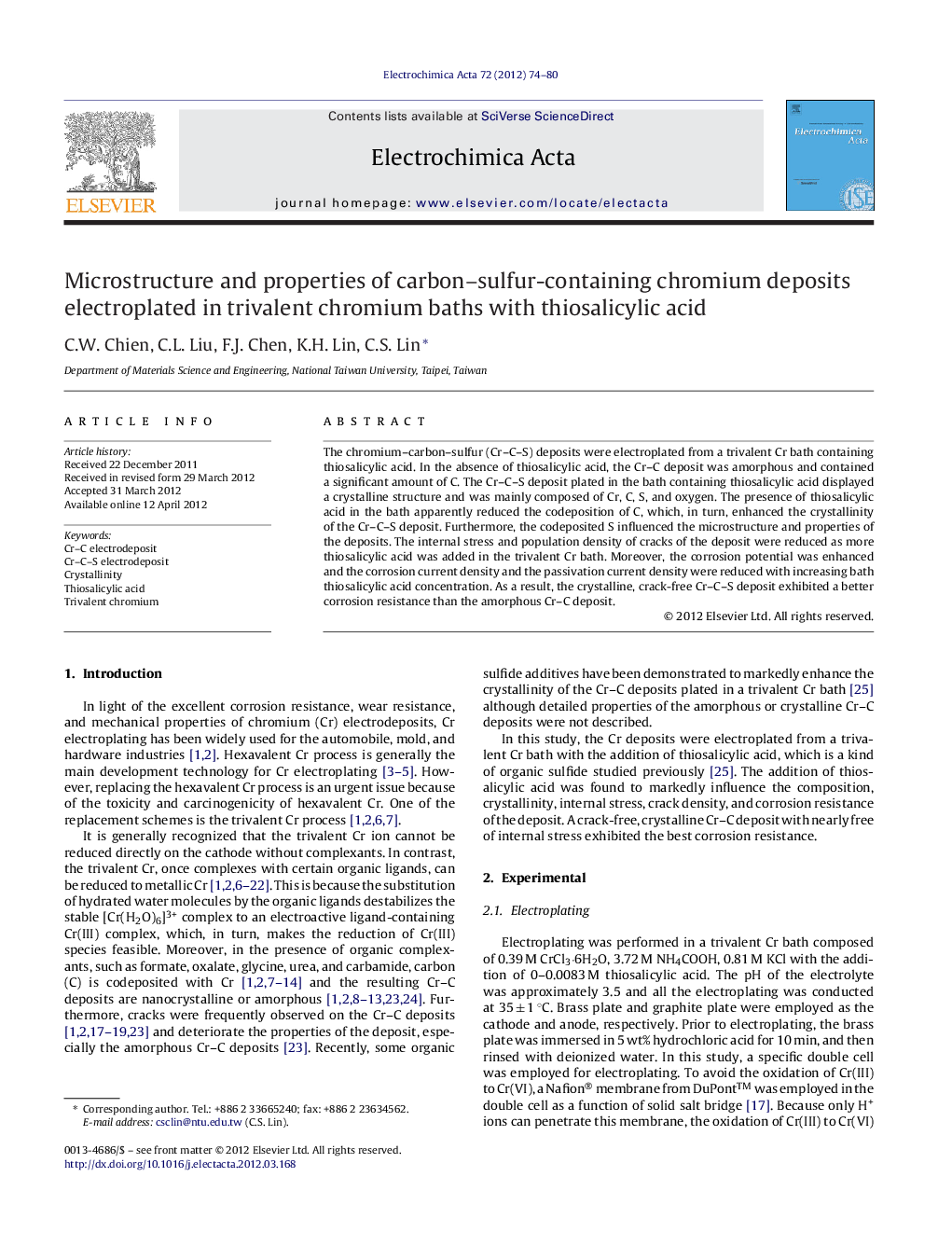| Article ID | Journal | Published Year | Pages | File Type |
|---|---|---|---|---|
| 188599 | Electrochimica Acta | 2012 | 7 Pages |
The chromium–carbon–sulfur (Cr–C–S) deposits were electroplated from a trivalent Cr bath containing thiosalicylic acid. In the absence of thiosalicylic acid, the Cr–C deposit was amorphous and contained a significant amount of C. The Cr–C–S deposit plated in the bath containing thiosalicylic acid displayed a crystalline structure and was mainly composed of Cr, C, S, and oxygen. The presence of thiosalicylic acid in the bath apparently reduced the codeposition of C, which, in turn, enhanced the crystallinity of the Cr–C–S deposit. Furthermore, the codeposited S influenced the microstructure and properties of the deposits. The internal stress and population density of cracks of the deposit were reduced as more thiosalicylic acid was added in the trivalent Cr bath. Moreover, the corrosion potential was enhanced and the corrosion current density and the passivation current density were reduced with increasing bath thiosalicylic acid concentration. As a result, the crystalline, crack-free Cr–C–S deposit exhibited a better corrosion resistance than the amorphous Cr–C deposit.
► The presence of thiosalicylic acid in trivalent Cr baths improves the quality of Cr–C–S electrodeposits. ► Thiosalicylic acid reduces cracks and the internal stresses of the Cr–C–S electrodeposits. ► Thiosalicylic acid enhances the corrosion resistance of the Cr–C–S electrodeposit. ► Sulfur is codeposited in the Cr–C–S deposit in the presence of thiosalicylic acid. ► Thiosalicylic acid inhibits the codeposition of carbon in the Cr–C–S deposit.
